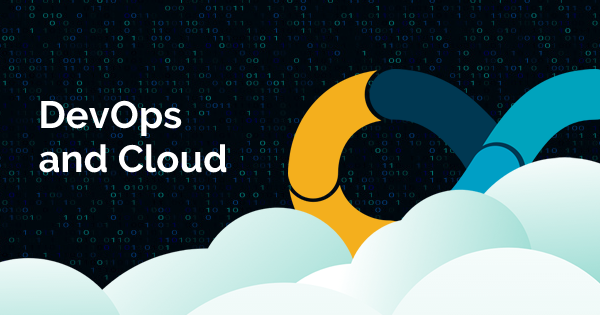DevOps has emerged as a transformative approach to software development and delivery, emphasizing collaboration, automation, and continuous improvement across development, operations, and other stakeholders. In cloud environments, DevOps practices play a pivotal role in streamlining software development, deployment, and operations, enabling organizations to achieve faster time-to-market, higher quality, and improved agility. Let’s delve into the principles of DevOps and explore how they are applied in cloud environments, along with tools and best practices for successful implementation.
Principles of DevOps
- Collaboration: DevOps promotes collaboration and communication between development, operations, and other cross-functional teams, breaking down silos and fostering shared responsibility for delivering value to customers.
- Automation: Automation is central to DevOps, enabling organizations to streamline repetitive tasks, reduce manual errors, and accelerate the software delivery pipeline. Automation encompasses areas such as infrastructure provisioning, configuration management, testing, and deployment.
- Continuous Integration (CI) and Continuous Deployment (CD): CI/CD practices involve automating the build, test, and deployment processes to deliver software changes to production rapidly and frequently. CI ensures that code changes are integrated and tested regularly, while CD automates the deployment of validated changes to production environments.
- Infrastructure as Code (IaC): IaC is the practice of managing infrastructure through code, enabling organizations to provision and configure infrastructure resources programmatically. By treating infrastructure as code, organizations can achieve consistency, repeatability, and version control in infrastructure management.
- Monitoring and Feedback: DevOps emphasizes the importance of monitoring application performance, infrastructure metrics, and user feedback to identify issues, measure success metrics, and drive continuous improvement. Monitoring and feedback loops enable organizations to detect and respond to issues proactively, optimizing system performance and user experience.
Applying DevOps in Cloud Environments
- Automated Infrastructure Provisioning: Leverage cloud-native tools such as AWS CloudFormation, Azure Resource Manager, or Google Cloud Deployment Manager to provision and manage infrastructure resources programmatically. Infrastructure as Code (IaC) enables teams to define infrastructure configurations using declarative code, ensuring consistency and repeatability across environments.
- Containerization and Orchestration: Containerization platforms like Docker and container orchestration tools like Kubernetes enable organizations to package applications and dependencies into lightweight, portable containers and automate deployment, scaling, and management. Containers streamline application deployment and ensure consistency between development, testing, and production environments.
- Continuous Integration and Continuous Deployment (CI/CD): Implement CI/CD pipelines using tools such as Jenkins, GitLab CI/CD, or CircleCI to automate the build, test, and deployment processes. CI/CD pipelines enable teams to deliver code changes to production quickly and reliably, fostering agility and reducing time-to-market.
- Infrastructure Monitoring and Management: Utilize cloud-native monitoring and logging services, such as Amazon CloudWatch, Azure Monitor, or Google Cloud Monitoring, to monitor application performance, infrastructure metrics, and system health in real-time. Implement alerting mechanisms to notify teams of issues and automate remediation actions using infrastructure automation tools.
- Security and Compliance Automation: Integrate security and compliance checks into the CI/CD pipeline using tools like SonarQube, Checkmarx, or Snyk to identify security vulnerabilities, code quality issues, and compliance violations early in the development lifecycle. Implement security scanning, static analysis, and automated testing to ensure secure and compliant code deployments.
Best Practices for DevOps in Cloud-Based Projects
- Start Small and Iterate: Begin with a small, well-defined scope and iterate gradually, incorporating feedback and lessons learned along the way. Focus on incremental improvements and continuous learning to drive continuous improvement and maturity in DevOps practices.
- Empower Cross-Functional Teams: Foster a culture of collaboration, ownership, and empowerment across development, operations, and other stakeholders. Encourage cross-functional teams to take ownership of end-to-end delivery, share knowledge, and collaborate on shared goals and outcomes.
- Automate Everything: Identify manual, repetitive tasks in the software delivery pipeline and automate them wherever possible. Automate infrastructure provisioning, configuration management, testing, deployment, and monitoring to eliminate manual errors, reduce cycle times, and improve efficiency.
- Embrace Cloud-Native Technologies: Leverage cloud-native technologies and services to harness the scalability, elasticity, and flexibility of cloud environments. Embrace serverless computing, microservices architecture, and managed services to optimize resource utilization, reduce operational overhead, and accelerate innovation.
- Measure and Improve: Establish key performance indicators (KPIs) and success metrics to measure the effectiveness of DevOps practices and identify areas for improvement. Continuously monitor performance, collect feedback, and iterate on processes to drive continuous improvement and achieve desired outcomes.
By embracing DevOps practices in cloud environments, organizations can achieve greater efficiency, agility, and innovation in software delivery. By fostering collaboration, automation, and continuous improvement, DevOps enables organizations to accelerate time-to-market, enhance quality, and deliver value to customers more effectively in today’s fast-paced digital landscape.
By Our Media Team
Our Editorial team comprises of over 15 highly motivated bunch of individuals, who work tirelessly to get the most sought after curated content for our subscribers.




